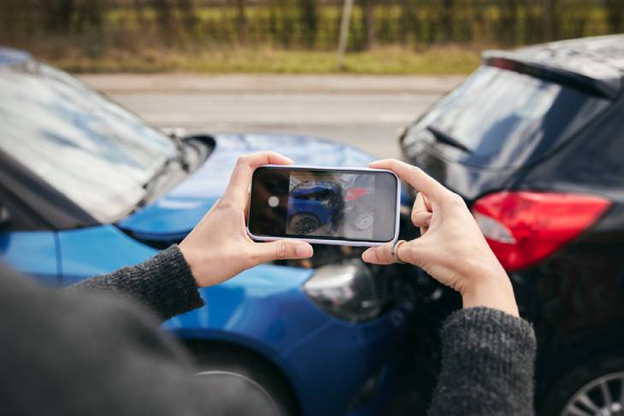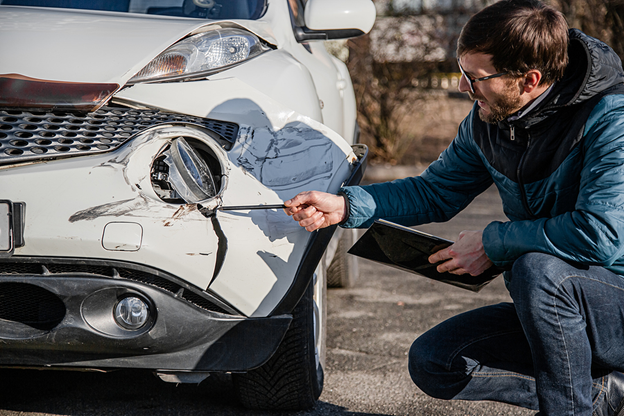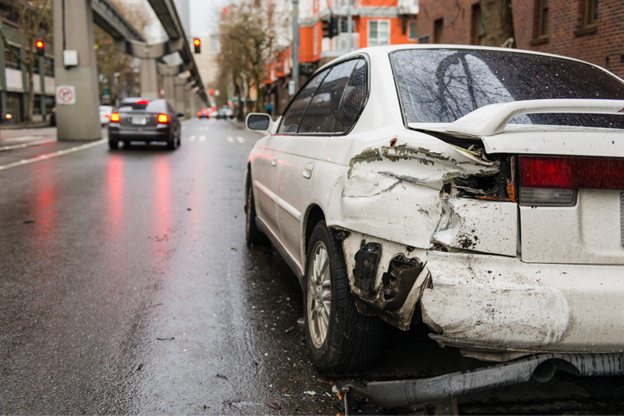Last Updated on October 30, 2025 by Angela T.
A hit-and-run in B.C. is when an unidentified driver damages your vehicle or injures you and then leaves without exchanging information. This includes collisions while driving and damage discovered in a parking lot. ICBC’s definition and examples are here: ICBC hit and run claims.
Legally, drivers have a duty to stop and provide their details after a collision under B.C.’s Motor Vehicle Act — Section 68 (Duty of driver at accident).
For coverage, ICBC notes that vehicle damage from an unidentified driver is covered when it happens on a roadway considered a “highway” under the Motor Vehicle Act, see ICBC hit and run claims for the coverage rules and examples (including parked-vehicle damage in public lots).
When a driver damages your vehicle and disappears, the stress can snowball fast. This guide walks you through exactly what to do next, starting with a simple, time-stamped plan for your first 60 minutes, followed by scenario tips for parked vs on-road collisions and incidents with injuries.
Your First 60 Minutes: A Time-Stamped Action Plan
Minute 0–10: Safety first
Check for injuries, turn on hazards, and if you’re driving, move to a safe location. If the damage was discovered while parked, avoid moving the vehicle until you’ve taken photos from multiple angles. Review ICBC’s guidance on what to do after a hit-and-run here: ICBC hit and run claims.
Minute 10–30: Capture evidence
Photograph close-ups and wide shots, note the time and exact location, and write down any details you remember (vehicle colour, make/model, even a partial plate). ICBC encourages submitting all available details to support your claim.
Minute 30–60: Report to police and start your ICBC claim
If there are injuries or the other driver is still fleeing, call 911. If you found damage later, use your local non-emergency line and follow RCMP guidance for reporting crime in B.C.: RCMP report a crime (B.C.).
Open your claim with ICBC online here: Report an ICBC claim online. Keep your police file number, photos, and notes handy when you submit.
Parked vs. On-Road vs. Hit-and-Run with Injuries
Parked vehicle
Preserve the scene with photos before moving the car, check sightlines for nearby security or doorbell cameras, and leave your contact details with any potential witnesses. For eligibility and documentation tips, see ICBC hit and run claims.
On-road collision
Move to a safe spot if the vehicle is driveable, then record vehicle positions, damage, and debris. Note direction of travel and any distinguishing features of the other vehicle (racks, decals, damage).
With injuries
Call 911 immediately and prioritize medical care. A police report is required when there’s a suspect or injuries; follow the RCMP’s reporting steps here: RCMP report a crime (B.C.)

Evidence That Strengthens Your Case
Photos that tell the story
Capture wide shots and close-ups of damage, the full scene, debris, skid marks, and the height/angle of impact. ICBC outlines what to record and photograph here: ICBC “What to do after a crash” card.
Witness statements that stick
Ask witnesses for their name, phone number, and a short description of what they saw (direction of travel, vehicle colour/make/model, partial plate).
Video sources that help identify the driver
Check for dash cam footage, storefront cameras, and residential doorbell cameras near the scene. Preserve the file and note timestamps.
Keep your paper trail
Save receipts for towing, temporary repairs, and glass; these can be uploaded to your claim. Manage your documentation here: ICBC manage your claim.
Pro tip
Use your phone’s voice recorder to capture a quick timeline while details are fresh. ICBC’s checklist of what to note is here: ICBC “What to do after a crash” card.
Reporting Windows & What to Say
When to call police (and what to include)
Call 911 if anyone is injured or the offending driver is still fleeing. For non-emergencies, contact your local detachment and file a report as soon as possible.
When you report, include the date/time/location, vehicle/driver description, direction of travel, photos, witness details, and a clear statement that the driver left the scene.
How to open your ICBC claim (and hours)
Start your claim online 24/7 here: Report an ICBC claim online.
Phone support and contact options are listed here (phone line typically 8 a.m.–8 p.m. daily): ICBC get help with your claim.
Have your police file number, a brief description of the incident, and any photos/video ready.
To qualify under hit-and-run coverage, ICBC notes you must provide a written account within six months.
A claims representative will advise if you can proceed directly to an ICBC-accredited repair facility or need a claim centre first.
Eligibility Quick-Check
Before you spend time gathering quotes or booking repairs, make sure your situation meets ICBC’s basic thresholds. Use this quick checklist to confirm you’re eligible; it’ll save time and help your claim move faster.
Public road or public parking lot?
Hit-and-run coverage applies when the damage happens on a roadway or public lot.
Reported promptly to police and ICBC?
Timely reporting helps eligibility; follow ICBC hit and run claims and RCMP report a crime (B.C.)
Unidentified driver?
Coverage is designed for incidents where the other driver left the scene.
Injuries involved?
A police report is required when there’s a suspect or injuries.
Private property (driveway/underground)?
Different rules can apply; speak with your adjuster.

If the Other Driver Is Identified Later (What Changes)
If a witness, video, or police follow-up identifies the other driver after you’ve opened your claim, update your file with ICBC right away: Manage your ICBC claim. Your claims representative will advise on next steps and any adjustments to fault or coverage.
When a driver is identified, ICBC may pursue recovery from the at-fault party (subrogation). In some cases this can affect your out-of-pocket costs (for example, deductible recovery) and clarify liability for any injuries or additional vehicle damage. If rental coverage or repair timelines need to be updated, your rep will confirm the changes with you.
- New evidence to share: police file updates, dash-cam clips, business/residential camera footage, or witness details: RCMP report a crime (B.C.)
Repairs Without the Runaround: How QA Collision Handles Everything
The fastest way to move from claim to keys is to choose an ICBC c.a.r. shop VALET facility, where estimates, approvals, rentals, and quality control are streamlined. Book now with QA Collision and explore our capabilities on QA Collision Services.
What to expect with QA Collision
- Triage and towing coordination via QA Collision Group
- Direct ICBC billing and clear status updates per Your ICBC claims process
- OEM-procedural repairs by Red Seal–certified technicians detailed on QA services
- Courtesy car through VALET as outlined in About the ICBC repair network
- Lifetime guarantee on repairs listed on QA services
- Ready to start? Schedule your assessment with QA Collision Services
Ready to Move From Claim to Keys?
If you’ve experienced a hit-and-run in BC, we’re here from claim to keys. Book QA Collision and see how our ICBC c.a.r. shop VALET process streamlines rentals, estimates, and approvals. Explore our capabilities and lifetime-guarantee repairs on QA Collision services.


i was in a hit and run accident by some old ass guy (90+yrs) and have his license plate . . .